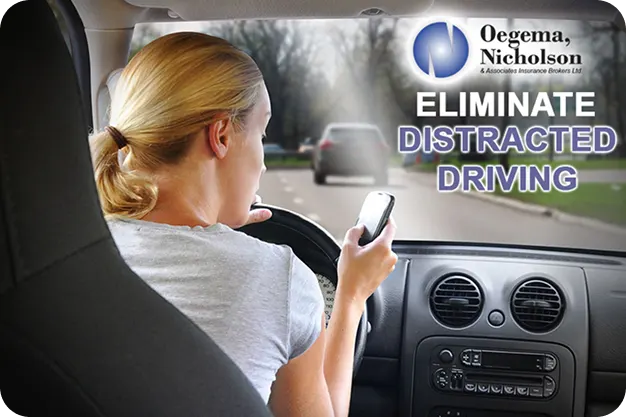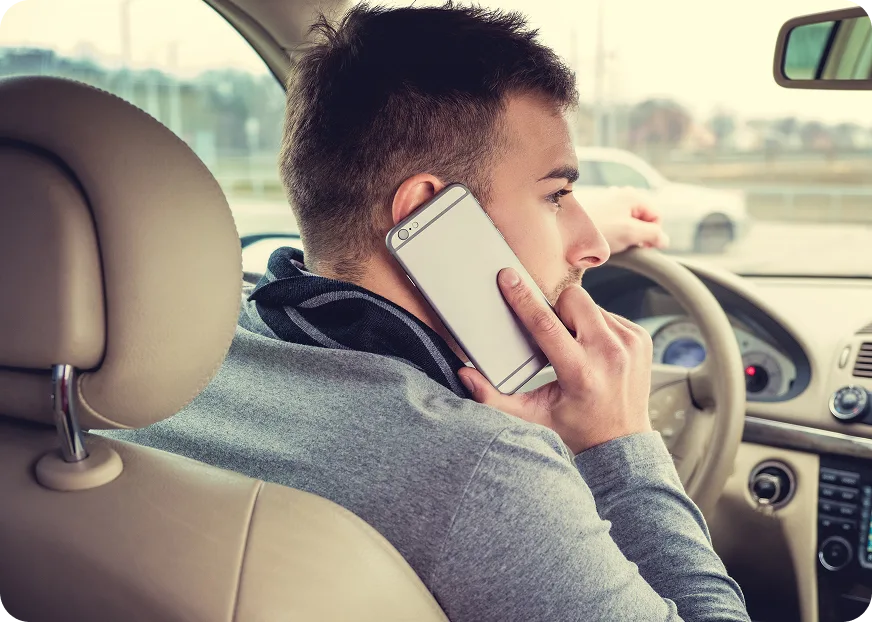Guess what the leading cause of death on Ontario roads is? It’s not weather conditions, it’s not excessive speed, and it’s not even impaired driving. Nope; the deadliest form of behaviour behind the wheel is, in fact, distracted driving. Distracted driving has quickly become an incredibly significant problem throughout North America. While our modern mobile devices keep people informed, connected and make them more productive, the darker reality of our always-connected world is that many people just can’t leave the phone alone while driving.

But distracted driving is not limited to our phones. There are all sorts of distractions that modern drivers face: increasingly sophisticated digital consoles for controlling various aspects of the car’s interior, for one… not to mention, some people’s insistence on grooming, eating, and whatever else strikes their fancy while they’re operating their motor vehicle. Certainly, phones are a big part of the problem, but they’re not the whole distracted driving problem. With that in mind, here are some bad habits you can eliminate, as well as some ways to reduce the temptation for distraction.
- Just because traffic is moving slowly does not mean it’s safe to take out the phone and check on your emails or Facebook. In stop-and-go traffic, you can’t rely on others to stop when you expect them to. Looking down for even a second can easily cause a fender bender.
- If making use of a GPS system, program your destination in ahead of time, before you start driving.
- Always try to avoid eating while driving.
- Studies have shown that it’s not the act of holding a phone that’s distracting, it’s the act of splitting your attention between tasks. So even though hands-free phone conversations are legal in Ontario, the safest thing you can do is cut phone conversations out of your driving habits entirely.
- If you need to initiate a phone conversation, pull off the road to a safe location.
- Program your favourite radio stations as presets so that you won’t be looking at your console, scrolling through the stations.
- Ensure the car’s interior is at a comfortable temperature before setting out so as to reduce time spent fiddling with settings while driving.
- In urban areas, resist the temptation to be drawn in by flashy billboards, road side advertisements and signs. Make it a priority to keep your eyes on the road.
Avoiding Highway Hypnosis
You’re driving on the highway in the dark. You feel a bit of fatigue setting in. Your mind wanders as you’re thinking about your day. Suddenly, you snap back to reality and realize you have no recollection of actually driving for the past five minutes. It’s a common phenomenon that’s commonly known as Highway Hypnosis, and it definitely qualifies as a type of distracted driving. If you’ve driven enough, you’ve probably experienced it yourself. This dreamlike, trance-like state worsens your reaction time, and could be a precursor to actually falling asleep behind the wheel. Here’s how to reduce your risk.
- Ensure you’re well-rested before operating your motor vehicle.
- Set your seat up as straight as you can to ensure alertness.
- If possible, plan long journeys to start in the morning, to avoid driving at night whenever possible.
- If you can, make the climate within the car a bit uncomfortable; you’re probably more likely to doze off in a perfectly cozy environment. Crack a window or crank the air conditioning if you need to.
- If you feel yourself getting more tired, don’t hesitate to pull off to a well-lit rest area and take a nap — better safe than sorry!
Better Driving = Lower Insurance
Ensure you’re doing everything you can to drive safely, and avoid distracted driving. Remember, a safe driving record can help you save significant money on your auto insurance. Trust the Ottawa Insurance Brokers at Oegema, Nicholson & Associates with your car insurance. We’ll work with you to build you the right coverage for your needs. Or, get started right away and submit a quote for auto insurance via our online form. Thanks for reading, The ONA Team.






